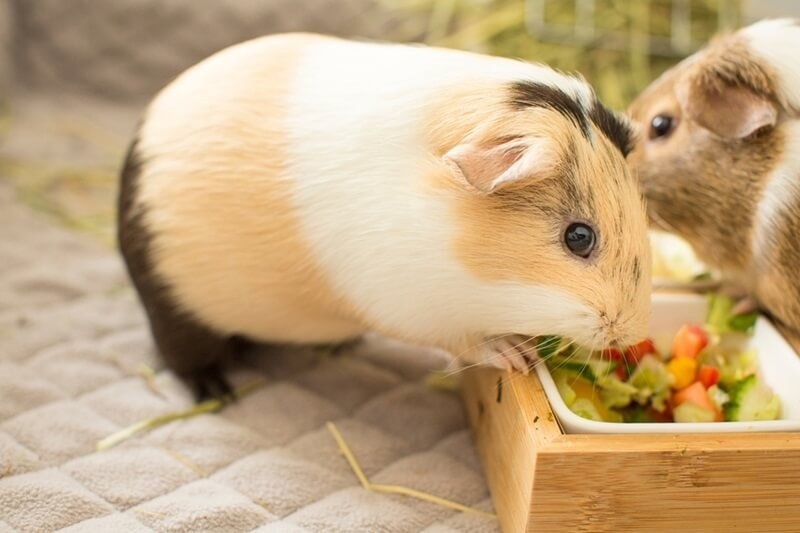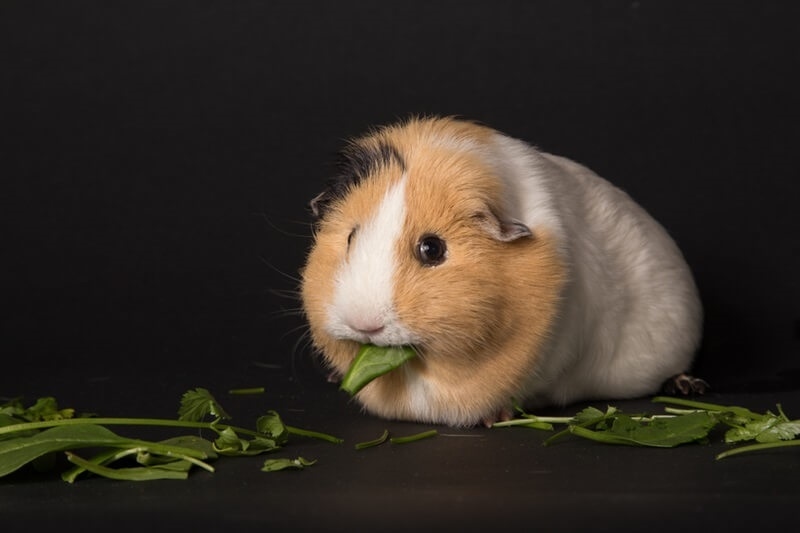
Guinea pigs might be small, but their care needs are surprisingly specific. One of the biggest essentials? Vitamin C. Unlike many animals, guinea pigs can’t make it on their own. If they don’t get enough through food, their bodies simply go without. And that can lead to serious health problems like scurvy. So, knowing the right guinea pig vitamin C food choices isn’t just a detail—it’s life-saving.
For first-time guinea pig owners, this might sound overwhelming. Don’t worry. With the right mix of fresh foods, pellets, and simple daily habits, you can give your piggies everything they need to stay active, healthy, and squeaky-happy. Let’s break it all down.
So, where does vitamin C come from in their diet? Fresh produce is the hero here. Many owners rely on guinea pig vegetables vitamin C sources like:
It’s tempting to load the bowl with a mountain of greens, but balance is key. Too much kale, for example, can mess with calcium levels. Rotate veggies daily to keep things interesting and nutritionally balanced. Plus, variety keeps your guinea pig from getting bored of the same old plate.
Vitamin C helps maintain strong bones, healthy skin, and a functioning immune system. Without it, guinea pigs become weak, lethargic, and prone to illness. That’s where scurvy comes in—a disease caused by long-term deficiency.
Unlike rabbits or hamsters, guinea pigs have this unique nutritional requirement. That means we can’t just toss in generic pet food and call it a day. Every meal needs to be part of a bigger picture that ensures they’re getting enough of this vital vitamin.
Veggies alone often aren’t enough, which is where fortified pellets come in. Guinea pig pellets vitamin C are specifically designed to cover their nutritional gaps. The catch? Vitamin C degrades over time. That bag of pellets sitting open for three months probably isn’t delivering the nutrients it promises anymore.
To make sure your guinea pig is actually benefiting, buy smaller bags, store them in airtight containers, and replace them regularly. Pellets should supplement—not replace—fresh veggies. Think of them as the foundation of the diet, not the entire structure.
The phrase sounds dramatic, but it’s real. A proper guinea pig scurvy prevention diet isn’t optional. It’s the difference between a thriving pet and one struggling with swollen joints, hair loss, and painful sores.
Prevention comes down to consistency. Daily servings of vitamin C-rich veggies, a steady supply of fortified pellets, and occasional fruits (like oranges or kiwi in tiny amounts) go a long way. Missing a day here and there isn’t catastrophic, but long-term neglect builds up quietly until it’s too late.
If you’re ever in doubt, watch for warning signs: limping, rough fur, weight loss, or unusual squeaks when handled. They’re your guinea pig’s way of saying, “Something’s not right.”

Not everything has to come from commercial products. Some of the best options are guinea pig natural vitamin C sources you can grab at the grocery store or even grow in your garden. Fresh herbs like parsley or cilantro are piggy favorites. Leafy greens like romaine lettuce or dandelion leaves (if pesticide-free) also add variety.
Offering these in small, daily portions keeps things interesting for your guinea pig and helps ensure they’re covered nutritionally. The fresher, the better. And unlike supplements, you don’t have to worry about artificial additives when sticking to natural produce.
Caring for guinea pigs doesn’t have to be expensive. With some planning, you can create healthy meals without overspending. Here are some affordable guinea pig diet tips:
Guinea pigs don’t need fancy, Instagram-worthy meals. They need consistency, variety, and freshness. Keeping it simple is usually best for both your wallet and their health.
On average, an adult guinea pig needs about 10–30 mg of vitamin C daily. Pregnant or sick guinea pigs may need more, but that’s something to confirm with a vet. Over-supplementation can also cause issues, so don’t overdo it with drops or tablets. Food-based sources are safest and easiest to balance.
Some owners add vitamin C drops to water bottles. The problem? Vitamin C breaks down quickly in water, especially when exposed to light. Plus, if your guinea pig doesn’t like the taste, they may drink less water overall. Not good.
If you’re going the supplement route, solid tablets or chews are a better option. But honestly, with the right mix of veggies and pellets, most guinea pigs don’t need extra supplements at all.
Guinea pigs thrive on routine. Feed veggies around the same time each day, keep hay available 24/7, and refresh pellets daily. Scatter-feeding or using hay racks also encourages natural foraging behavior.
Water bottles should be checked and refilled daily, especially in warm weather. Dehydration only worsens vitamin C deficiencies.
Even with the best intentions, sometimes deficiencies slip through. Watch for:
If you see these, it’s time for a vet visit. Better to be cautious than to let scurvy develop unchecked.
It’s easy to overthink things. Yes, guinea pigs need vitamin C every day, but don’t panic if you miss a serving of bell pepper. Their diet is about patterns, not perfection. A mix of hay, pellets, and daily fresh veggies goes a long way.
Think of their meals as a rotation: leafy greens, a few herbs, crunchy veggies, and a reliable pellet base. Keep it fresh, keep it varied, and don’t complicate it with too many extras.
When it comes to guinea pig care, vitamin C is non-negotiable. A good balance of veggies, fortified pellets, and the occasional fruit creates the perfect foundation for long-term health. By focusing on reliable guinea pig vitamin C food options, you’re not just preventing scurvy—you’re giving your pets the energy and comfort they need to enjoy life to the fullest.
At the end of the day, guinea pigs don’t care about complicated diet charts. They care about fresh food, consistency, and the love you put into their care. With a little planning and a lot of hay, you’ll have happy, healthy piggies squeaking at you every time you walk into the room.
This content was created by AI